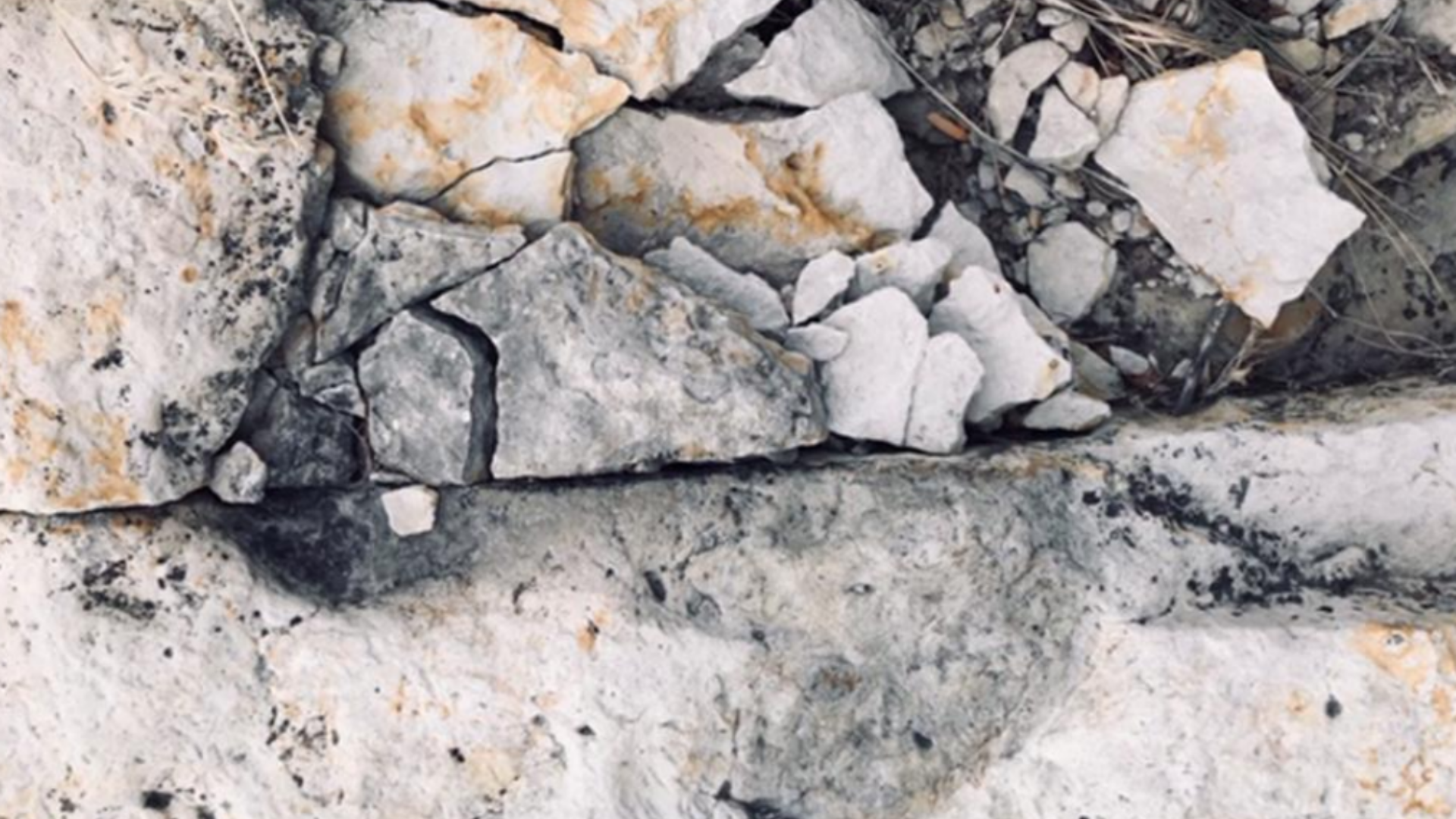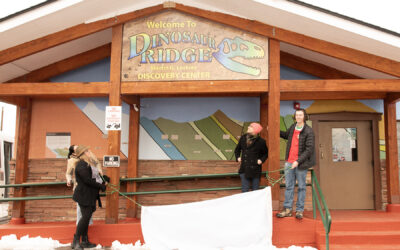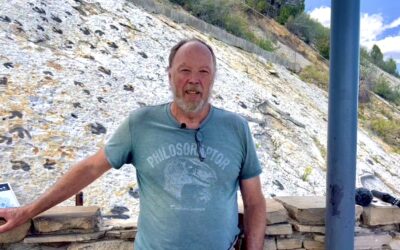Nearly miraculous conditions are required for fossils to form and last millions of years. Once lost to erosion, they’re gone forever. The location paleontologists have ranked as the #1 dinosaur tracksite in America is home to hundreds of irreplaceable trace and bone fossils preserved in situ on a section of the Dakota hogback in Morrison, Colorado known as Dinosaur Ridge. Since the nonprofit Friends of Dinosaur Ridge was founded in 1989, mapping has shown a loss of at least 50 dinosaur footprints caused by erosion.
The famous tracksite sits at about a 40-degree angle facing Denver was inadvertently revealed in 1937 by a road crew blasting into the sandstone with dynamite. The prehistoric beach also contains ripple marks made by ancient sea waves, crocodilian swim marks carved into a long gone creek bed, and microbial mats where prehistoric life thrived during the Cretaceous time period.
On the west side of Dinosaur Ridge facing the iconic Red Rocks Amphitheatre, uplifted layers of stone encase fossilized dinosaur bones from an even older time— the Jurassic. In 1877, hundreds of bones were excavated here and sent by railroad to Yale for study and description. Many of them still reside in the Peabody Museum, and some can be viewed a few miles southwest of the original quarries at the Morrison Natural History Museum. Still others remain embedded in the rock along a now closed roadway where visitors can view them and picture a completely different Colorado with giant sauropods walking in search of plants to eat, and bipedal theropods tracking after them.
As Friends of Dinosaur Ridge co-founder Dr. Martin Lockley explained at a recent TEDx Mile High Talk, “It’s very important that these ancients landscapes are preserved because they are actual Jurassic Parks. Just as we protect sites like Stone Henge or Pompeii or the Grand Canyon, we need to protect these sites for the future.”
Occasionally, erosion reveals new fossils as soil is worn away or boulders containing fossils break off and slide within human view. At Dinosaur Ridge it’s estimated 36 dinosaur tracks have been revealed by erosion since 1989 when mapping began— far less than the number lost, and evidence of the need for greater preservation efforts. A working group has begun to address strategies including water diversion, high-resolution photogrammetry monitoring, and a review of other efforts in the U.S. and around the world.




